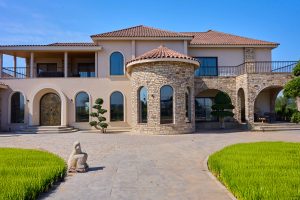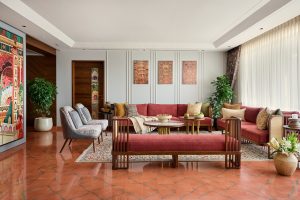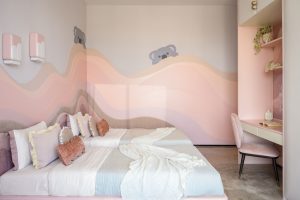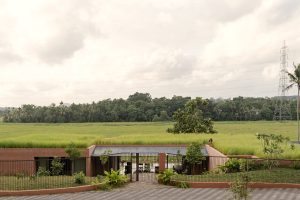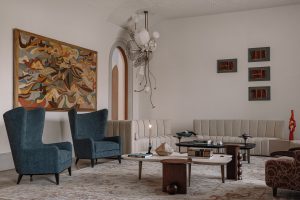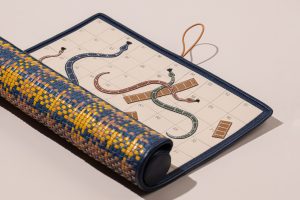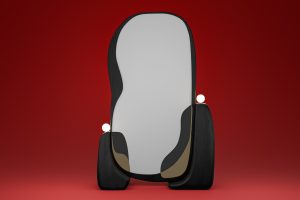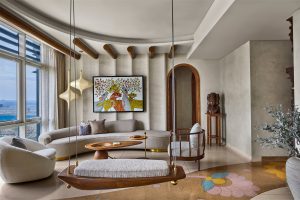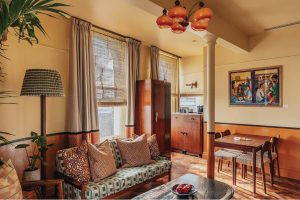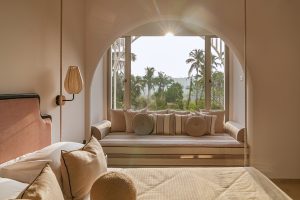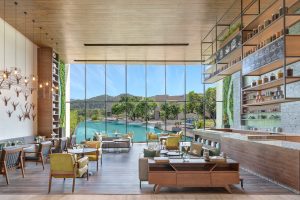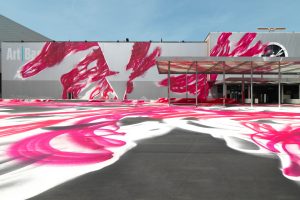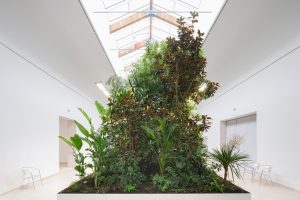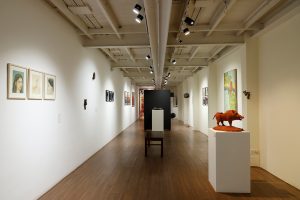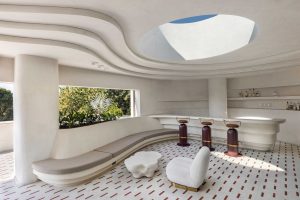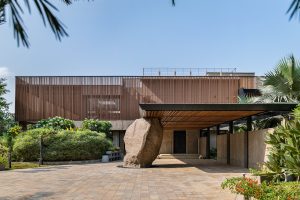Avant-Garde Learning: Inside Mumbai’s Unique 3D Printing Ideation Lab
The Cathedral and John Connon School in Mumbai makes room for a first-of-its-kind 3D printing ideation lab that fosters creativity in an avant-garde learning space.
- 15 Oct '24
- 6:02 pm by Simran Almeida
In a shift from traditional subjects, the historic Cathedral and John Connon School a few months ago unveiled a trailblazing ideation lab that promotes design thinking, 3D designing and 3D printing. Conceived under the vision of Cathedral and John Connon School’s principal, Dr. Sonal Parmar, and ideated by the Middle School’s Headmistress Mrs. Velanie Pereira, this contemporary ideation lab contrasts with the school’s rich historical legacy. The lab’s nuances were further conceptualised Supriya Bhuwalka and designed by Apoorva Shroff of Lyth Design– both parents– this classroom portrays a convergence of past and future, telling tales of the evolution of time. Completed in just five weeks, this classroom reimagines educational design by offering young innovators opportunities to engage with modern design.
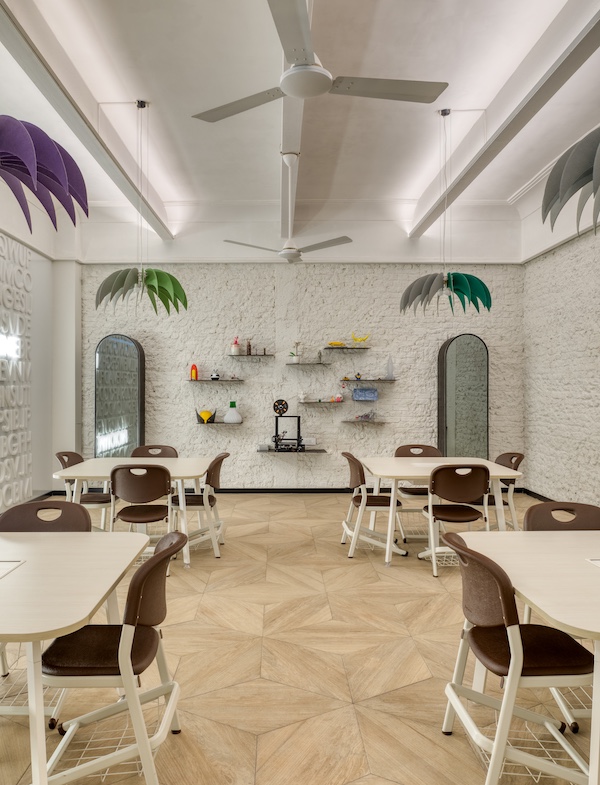
Contemporary Tutelage
A new chapter unfolds within The Cathedral and John Connon School’s venerable walls that date back to 1860, where traditional education and legacy have long reigned supreme. Sited in the school’s middle section, with its stone façade, pointed arches and intricately carved neo-classical columns while spotlighting the school’s innovative vision amidst the historic backdrop. “Cathedral being a very progressive school, wanted the children to have life skills in this new digital world, making that the genesis of the idea,” Bhuwalka reveals. The motive for the ideation lab was conceived in alignment with the New Education Policy (NEP). Kreena Shah, a teacher at the ideation lab, highlights its relevance stating, “I am from an industrial background, I realised that in India, people are just traders, not many people are designers and manufacturers.”
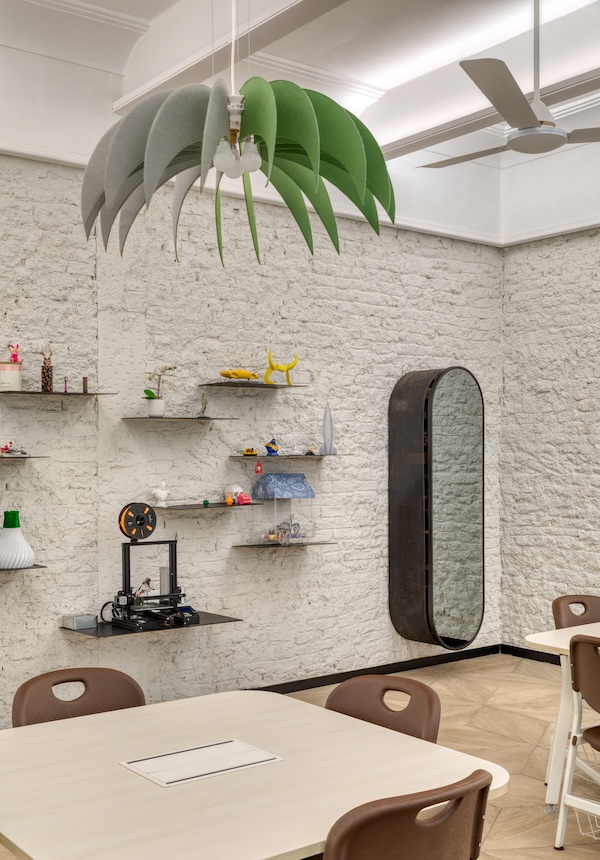
Cruising Through Time
“The brief from the school principal was simple: to design a fun, engaging space that would encourage creativity and innovation,” shares the designer Apoorva Shroff. Inside these stone walls was a typical classroom, featuring particoloured walls, petite windows and a false ceiling that confines the space, making the space smaller than it truly was. Shroff reflects, “The moment I stepped into the room, I knew light, texture and playful elements would be the key to unlocking the students’ potential.” Her vision was to create a space to inspire young minds and fuel their creativity.
Also Read: Reimagining A Women’s College In Surat: A New Benchmark In Institutional Architecture
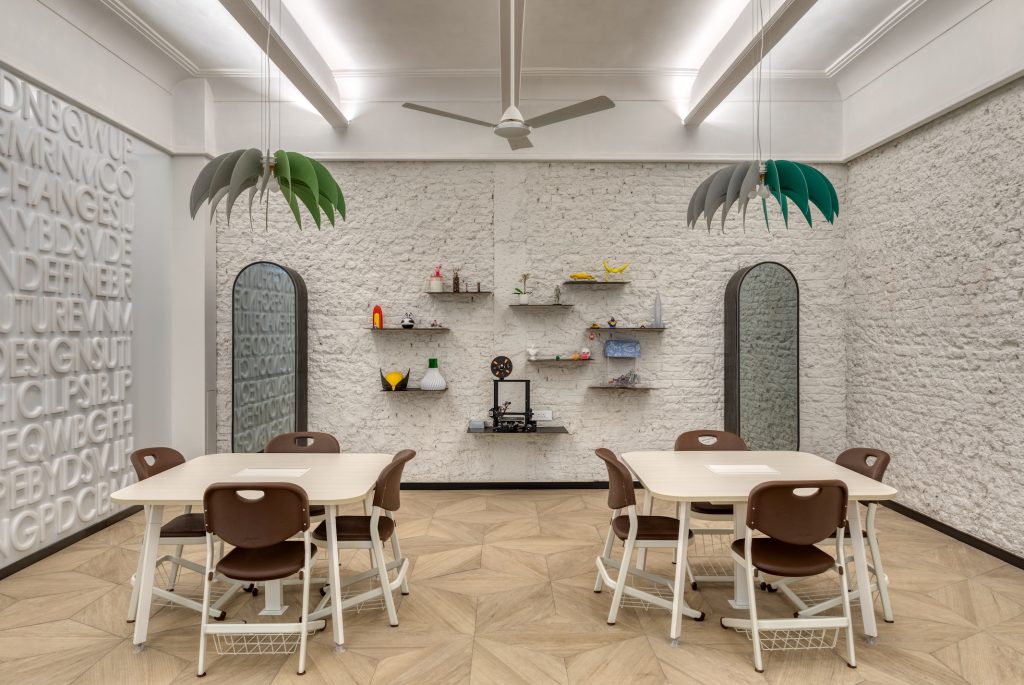
The typical classroom’s transformative journey began with stripping the structure’s walls to their original brickwork while pairing them with contemporary touches of sleek industrial metals. Shroff’s designs invite sunlight to flood in Mumbai’s tightly huddled settlements, where natural light is a coveted luxury. Consequently, she expunged the archaic false ceiling inviting natural light to saturate through once-hidden ventilators, rendering the classroom airy and light. This light is further dispersed across the pristine white room through the ingenious use of a mirror that cloaks a storage unit, amplifying the space’s functionality. Shroff shares, “I particularly enjoyed designing the minimalist storage cupboards, which demanded a clever application of design and function,” highlighting her commitment to creating a balance.
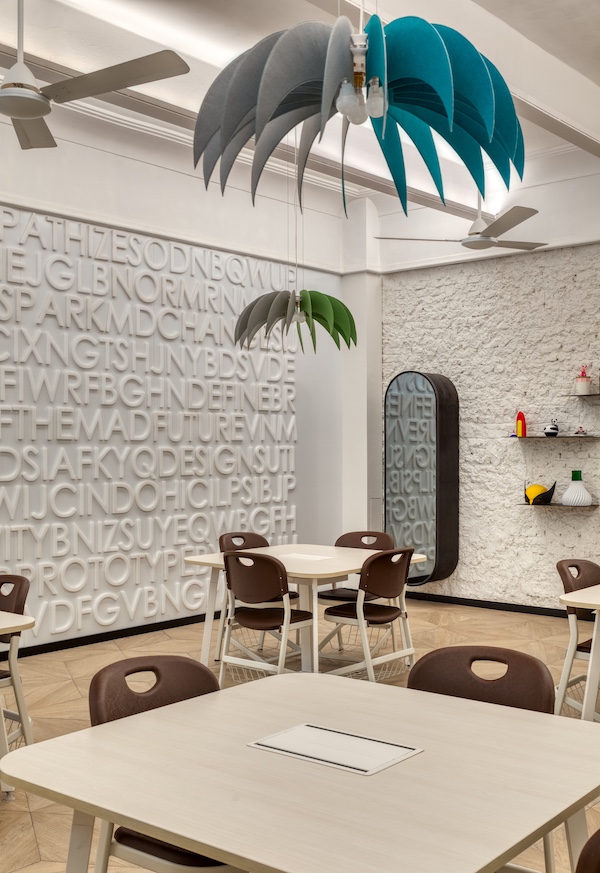
The rugged wall and the alphabet wall stand as a contrast displaying the convergence of past and present. (Image credit: Pulkit Sehgal)
Also Read: A Multi-Species Colourful School ‘Education’, Designed By Two Spanish Architects In Madrid
Upon entering the classroom, the rugged texture of the white-dyed brick walls serves as a perfect backdrop for the sleek metal shelving units, that showcase the 3D printing machine alongside petite trinkets. While the 3D printer is a demonstrative piece within the lab, Shah explains, “The (entire) printing is done in my office and then passed on to them.” Reflecting on the design considerations, she further adds, “We don’t want that printer running there, all the time for the fumes to pass out to the children.”
A striking contrast to the rustic wall is the room’s pièce de résistance—an illuminated alphabet wall, adorned with motivational phrases. Bhuwalka describes “There are seven quotes that we looked at and they were placed in a way that, when you switch on one particular switch, it comes on.” She adds, “So that space is to spark curiosity and creativity in the children.” The space is further soundproofed with wooden flooring and flamboyant pendant lights that cascade over each desk, cultivating a setting that fosters ingenuity among students. “So it’s really poetry in motion in my mind,” Bhuwalka reflects, capturing the essence of the entire process from design to printing.
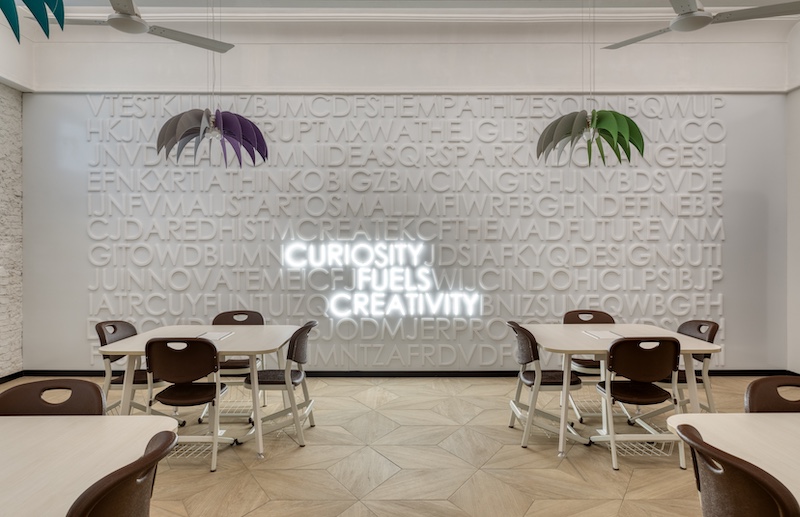
The Headmistress of the Cathedral’s Middle School, Mrs. V Pereira, shares, “The Ideation Lab that she (Apoorva Shroff) designed at the Cathedral and John Connon Middle School blends vintage beauty with tech integration and creates an inspiring space, all in a matter of a month” This ideation lab at the school strive to facilitate “designing through a software because the printer by the end is a plug-and-play,” Shah reveals, emphasizing a commitment to making design intuitive for students. It harnesses technology to foster creativity in students ensuring they become attuned to even the most mundane aspects of their environment. Here, within heritage walls, a future unfolds—where learning becomes an immersive journey, woven with tradition and innovation, inviting the students to explore beyond the ordinary.

